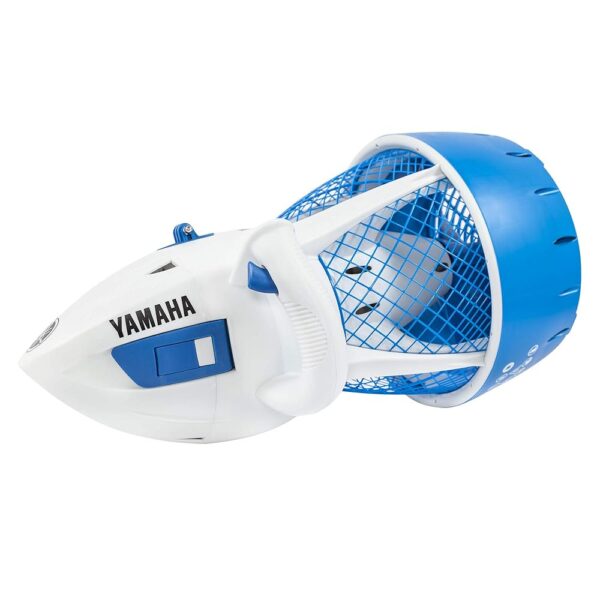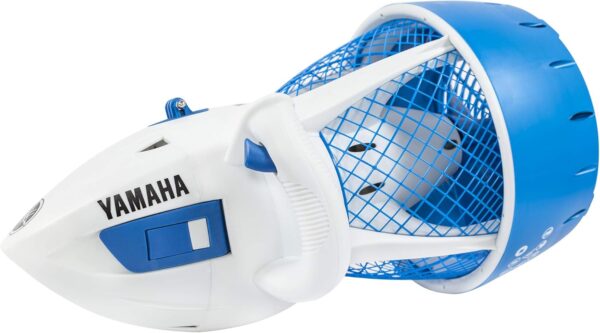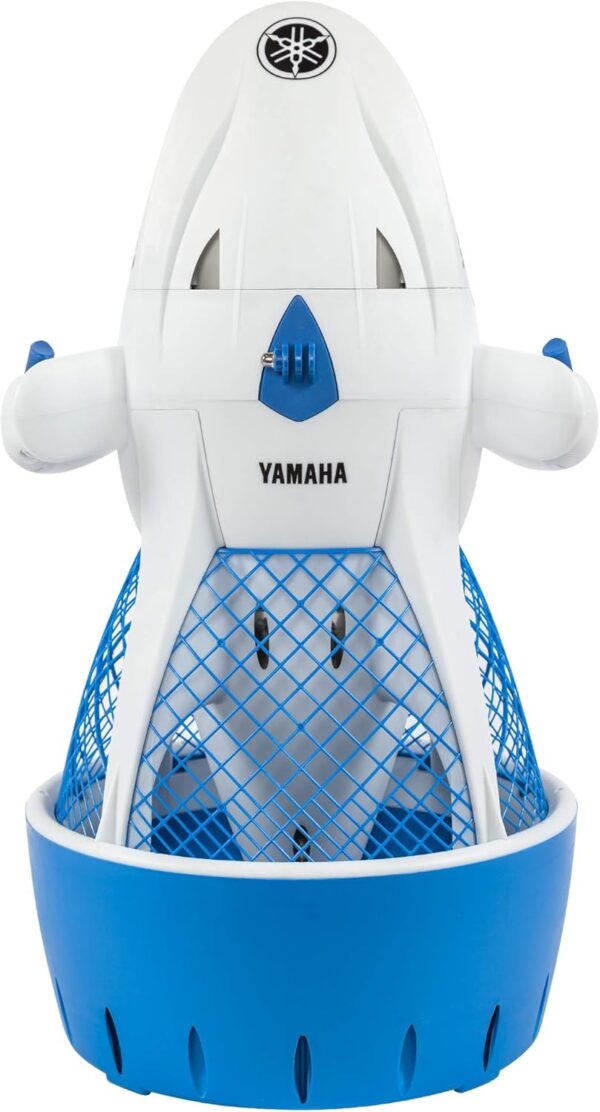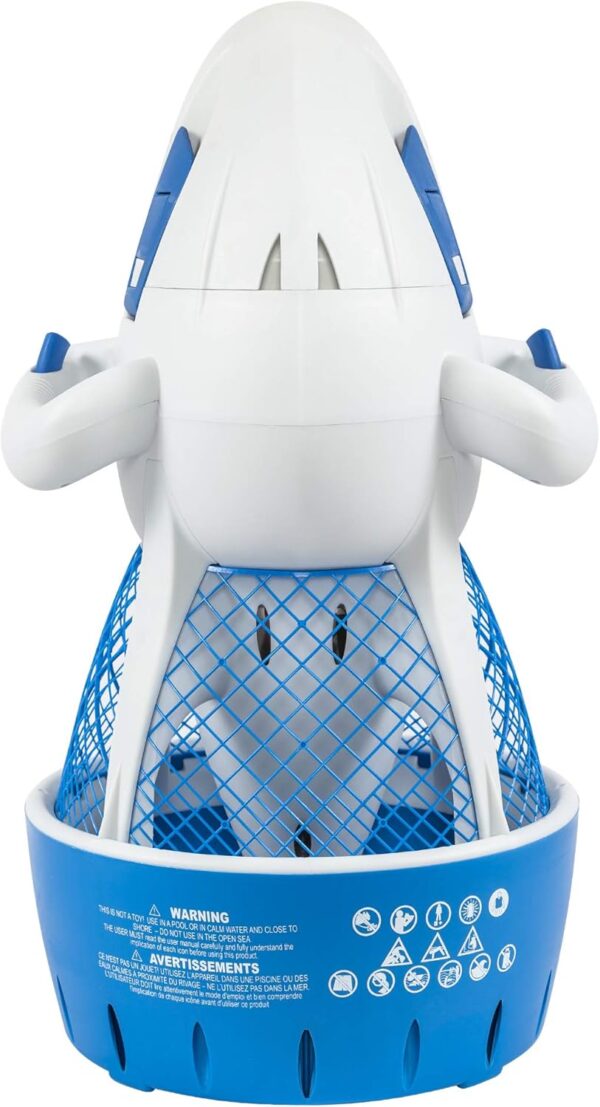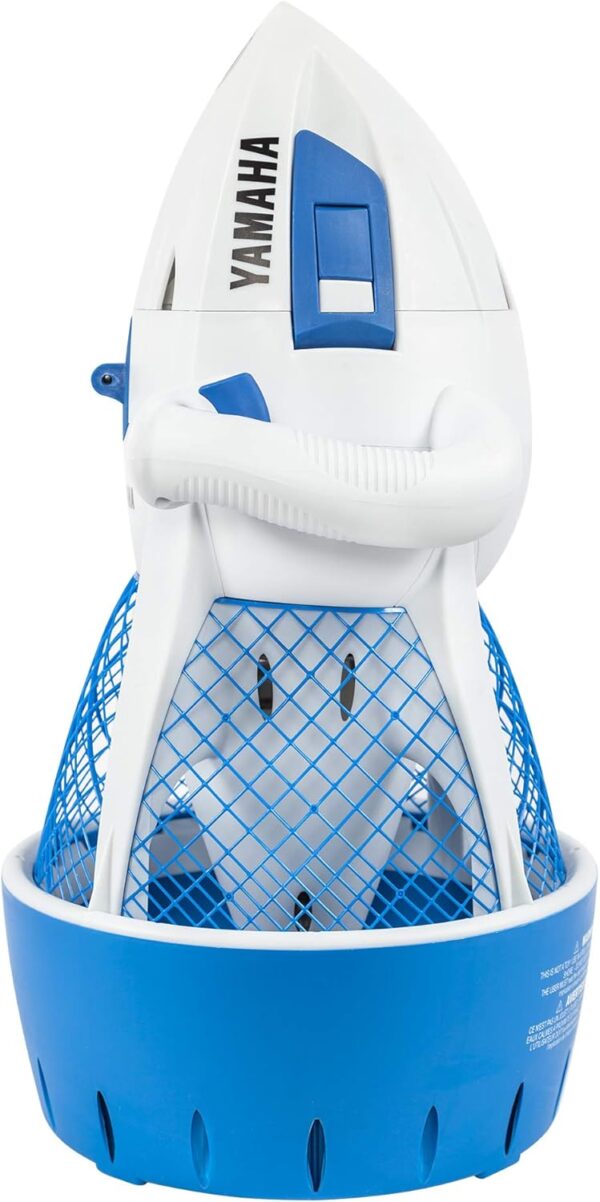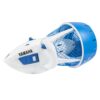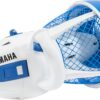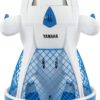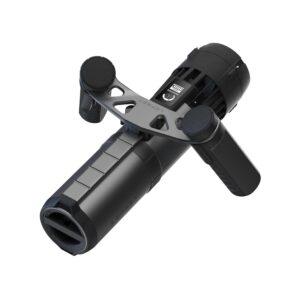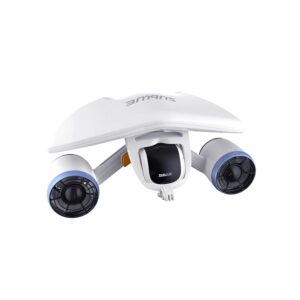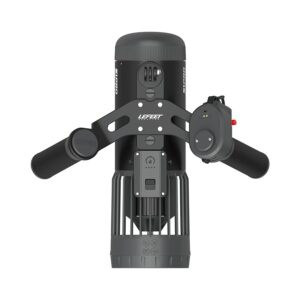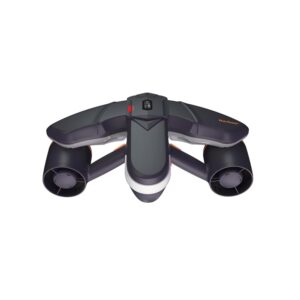Yamaha Explorer YME23001 Sea Scooter Review for Underwater Fun
Yamaha Explorer YME23001 Sea Scooter Review for Underwater Fun
- Effortless Maneuverability: The scooter moves smoothly and is capable of pulling both kids and adults with ease, making it perfect for pool and snorkeling adventures.
- Durable Build: Its solid construction ensures reliable performance, while the battery housing is well-sealed to prevent water damage during use.
- Impressive Battery Life: The device offers up to an hour of run time, providing sufficient time for underwater exploration or recreational play.
- Safety-Centric Design: Features like dual-trigger controls and a caged propeller casing prioritize user safety during operation.
- GoPro Compatibility: The built-in mount allows for seamless camera integration to capture exciting underwater moments.
- Lightweight and Portable: Despite its sturdy build, the scooter is easy to carry and transport, enhancing convenience for travel or storage.
As an Amazon Associate I earn from qualifying purchases.
Description
Yamaha Seascooter Explorer Review: My Underwater Adventure with This Gadget!
Nothing screams summer fun like the Yamaha Seascooter Explorer. I recently had the chance to take this underwater scooter out for a spin, and let me tell you, it was an experience. To start off, I wasn’t entirely sure what to expect. I mean, a scooter for the water? It sounded a bit like something out of a James Bond movie. But, boy, was I in for a treat!
As someone who enjoys snorkeling and shallow dives, I was eager to see how this sea scooter could enhance my aquatic adventures. Weighing about 15 pounds, it’s surprisingly lightweight for something that packs so much power. The white and blue design is sleek and modern, giving it that premium feel you’d expect from Yamaha. The built-in GoPro mount was an unexpected bonus. I managed to capture some epic underwater footage that made my friends jealous—until I reminded them I had the scooter!
Fun, but Not Without Flaws
The Yamaha Explorer Seascooter can reach speeds of up to 2.5 mph and go as deep as 30 feet. For my casual snorkeling trips, that was more than enough. However, I noticed that the speed might be too slow for thrill-seekers. My nephew, who’s 12 and full of energy, zipped around the pool with it but quickly got bored, saying, “It’s cool, but I can swim faster!”
The positive buoyancy is a double-edged sword. It’s great because it doesn’t sink in salt water, but in fresh water, it can slowly dip. If you’re planning to use it in lakes, keep an eye on it or risk watching it sink to the depths.
Another aspect to consider is the battery life. The included sealed lead acid battery lasted me around 40 to 50 minutes, which was sufficient for one session but left me craving more. Charging it took a whopping 12–16 hours. That’s like waiting for Christmas morning as a kid—agonizing.
Family Adventures and Real-Life Use
I brought this to a family gathering, and it was a hit among the younger crowd. My 10-year-old niece had a blast pretending she was a mermaid zipping through the pool. Even my dad, who’s notoriously hard to impress, gave it a spin and proclaimed, “This is actually pretty fun!” However, the dual-trigger control required a bit of patience. It’s meant as a safety feature, which is great, but it wasn’t as intuitive as I’d hoped.
Comparing to Other Models
Compared to competitors like the Sublue Mix Pro, the Yamaha Explorer feels more like an entry-level gadget. The Sublue offers faster speeds and longer battery life, but it’s also pricier. What the Yamaha has going for it is its safety features, such as the auto-shutoff and caged propeller casing, which make it a better choice for families with kids.
Is It Worth It?
At its price point, the Yamaha Explorer is a decent investment if you’re looking for a fun, family-friendly gadget. However, if you’re after high performance and longer usage times, you might want to explore other options. The lightweight design and camera integration make it a great choice for casual users, while the limited speed and battery life might deter serious divers.
Pros
- Lightweight and portable: At only 15 pounds, it’s easy to carry around.
- Family-friendly features: The auto-shutoff and caged propeller ensure safety for kids.
- GoPro compatibility: Perfect for capturing underwater memories.
- Ease of use: Basic controls make it accessible to beginners.
- Positive buoyancy: Ideal for saltwater use.
Cons
- Slow speed: At 2.5 mph, it’s not thrilling enough for everyone.
- Short battery life: Around 40–50 minutes of use per charge.
- Long charging time: Requires 12–16 hours to fully charge.
- Freshwater buoyancy issues: Tends to sink slowly in non-saline water.
- Dual-trigger control: Can be a bit tricky to master at first.
What Comes with the Product
- Yamaha Explorer Seascooter
- Sealed lead acid battery
- Charger for the battery
- Silicone lubricant for the seal
- Instruction manual
- GoPro-compatible camera mount
How to Use Guide
- Charge the Battery: Plug in the battery and let it charge for 12–16 hours. The green light on the charger will indicate it’s ready.
- Assemble the Scooter: Insert the battery and ensure the rubber seal is properly lubricated and tight to prevent water leakage.
- Attach Your GoPro: If you plan to record, secure your camera to the mount.
- Grip the Handles: Hold onto the ergonomic handles and familiarize yourself with the dual-trigger control system.
- Start the Scooter: Activate both triggers simultaneously to power it on.
- Navigate: Guide it underwater, using your body to steer.
- Monitor Battery: Pay attention to the battery indicator to avoid being stranded.
- Rinse and Store: After use, rinse with fresh water and store in a dry place.
Warranty & Support Information
The Yamaha Explorer Seascooter comes with a 1-year limited warranty. This covers manufacturing defects and issues like faulty seals or motor problems. Note that the warranty does not cover wear and tear or water damage due to improper sealing.
For support, Yamaha offers a dedicated customer service portal on their website. You’ll find FAQs, troubleshooting guides, and contact information for further assistance. Keep your purchase receipt handy—you’ll need it for any warranty claims.

